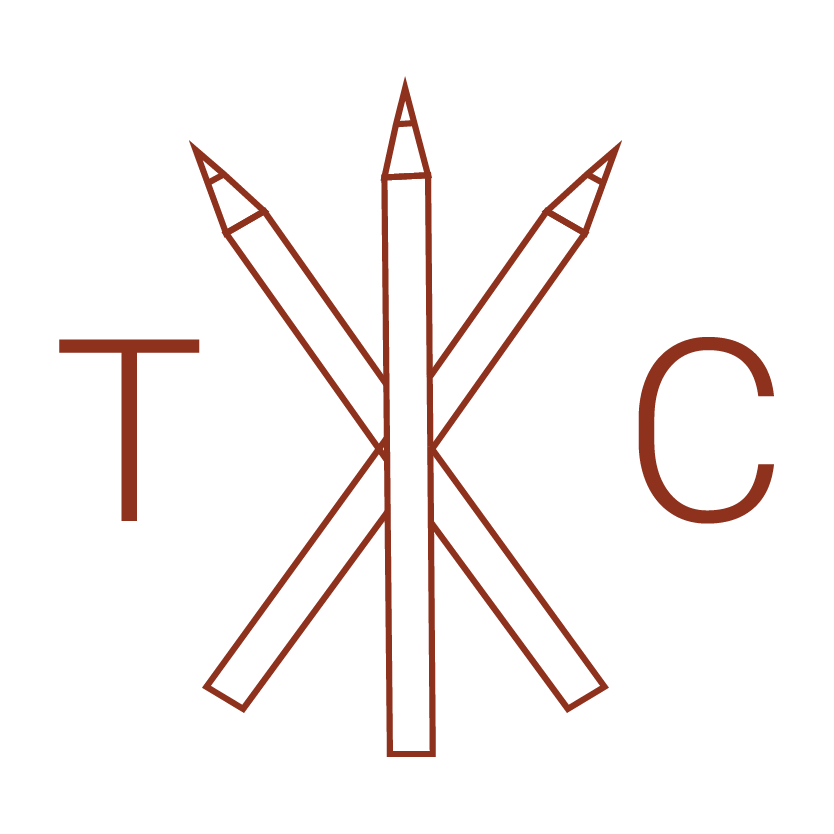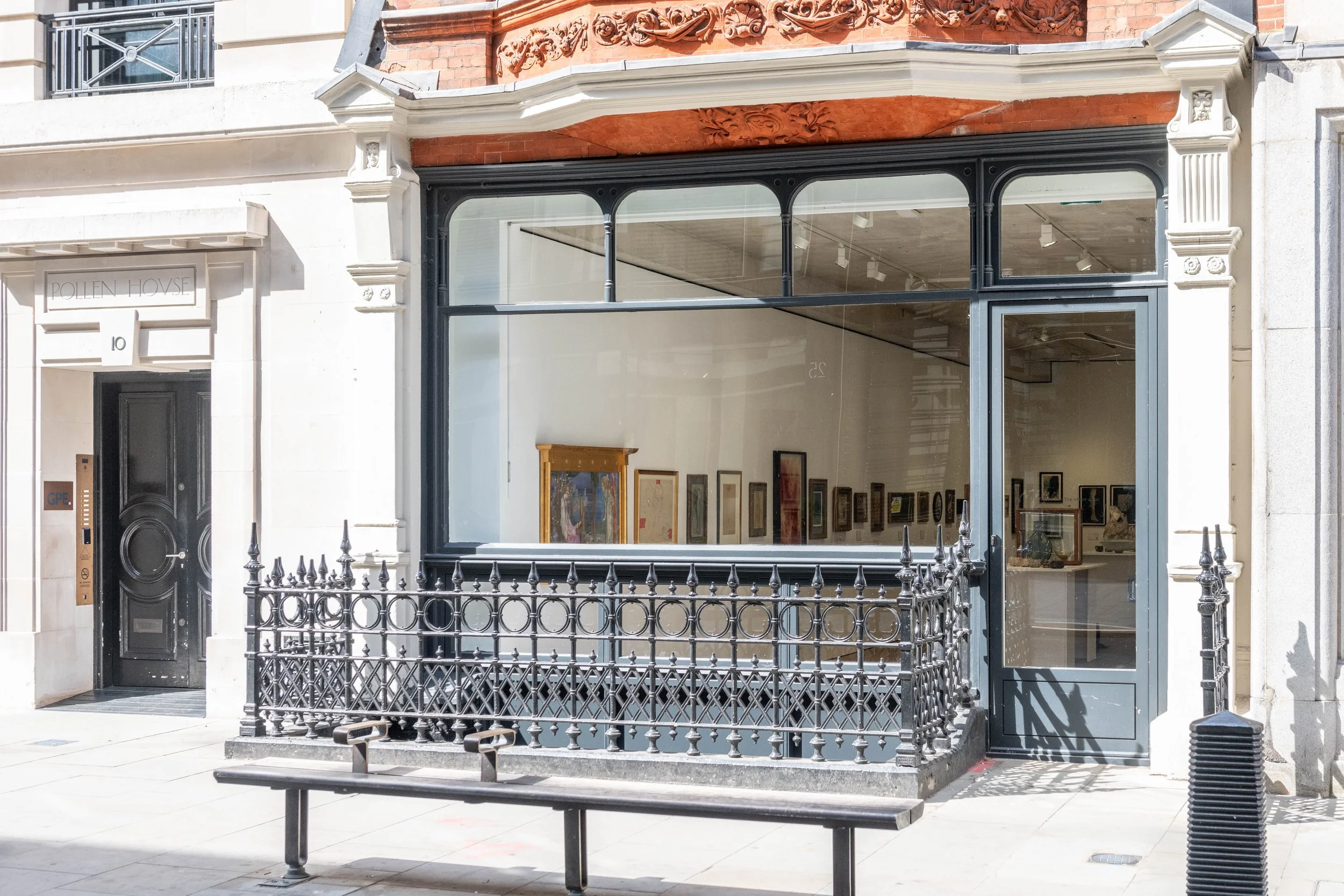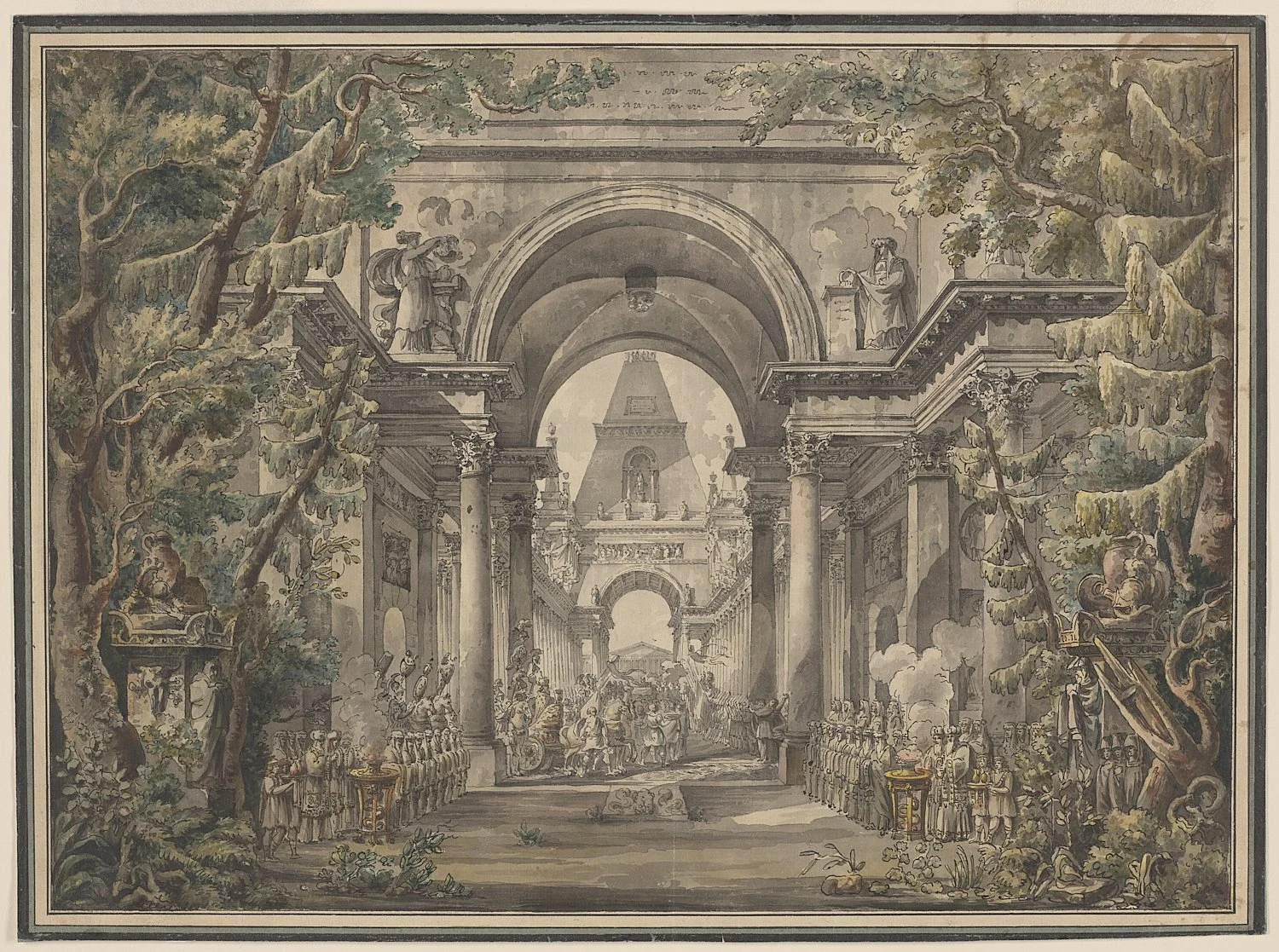July 2025
Wednesday, July 2
Trois Crayons celebrates the art of drawing from the 15th to the 21st century. From in-person exhibitions and collaborative events to our monthly newsletter and social media activity, we connect the global drawings community.
Coming Up
Greetings from Trois Crayons HQ where our summer exhibition, Tracing Time, is in full swing at No.9 Cork Street. Our thanks to all who have visited so far and to those who have taken part in the events programme. The exhibition runs until Saturday, 5 July, and is open to all. Registration remains open for the remaining live events, including panels on Italian Renaissance drawings, the impact of digital platforms on access to the drawings market, the relationship between drawings and ceramics, and the drawings of Antoine Watteau.
Today, we are delighted to announce the launch of the Trois Crayons Museum Forum, a social network for the global drawings community to exchange ideas around drawings from public collections. As part of an event in the No.9 Cork Street auditorium, Tom will briefly present the forum this afternoon, 2 July.
Regular newsletter service resumes with a round-up of the month’s leading drawings news stories, upcoming events and exhibition listings, a ‘Drawing of the Month’ from the National Gallery of Canada provided by Sonia del Re, and the customary selection of literary and audio highlights.
For next month’s edition, please direct any recommendations, news stories, feedback or event listings to tom@troiscrayons.art.
TROIS CRAYONS MUSEUM FORUM
We are pleased to announce today’s launch of the Trois Crayons Museum Forum, an innovative digital platform dedicated to the discussion and identification of premodern drawings in public collections. The Trois Crayons Museum Forum will foster the exchange of ideas between curators, scholars, art dealers, and the wider public.
The forum is a social network where Museum Partners – curators and researchers – can share works from their collections, raising unresolved questions of attribution, sitter identity, dating, subject matter, and provenance. By opening these discussions to the global community of experts and enthusiasts, the platform enhances visibility and invites fresh perspectives on drawings that might otherwise remain in obscurity.
Users are now eligible to register and leave comments. Museum Partners are now eligible to post Discussion queries. To register as a Museum Partner please contact info@troiscrayonsforum.org.
The Trois Crayons Museum launches today with a selection of queries posed by the world’s most respected institutions: Ashmolean Museum, The Courtauld Gallery, The Courtauld Gallery, The Devonshire Collections, Chatsworth, Hood Museum of Art, The Kunsthalle Bremen, The Metropolitan Museum of Art, The Morgan Library & Museum and The Staatliche Museen zu Berlin.
Unknown artist (French/German, 18th century), Portrait of a Draughtsman, pastel and chalk. © Kunsthalle Bremen – Der Kunstverein in Bremen, Kupferstichkabinett
NEWS
In Art World News
The London art market is in full swing this week with Old Master auctions, new exhibitions in galleries and museums and countless opportunities to see rarely displayed work for free. Classic Art London remains officially open until 4 July and Classic Week at Christie’s ends on 9 July.
In Exhibition and Art Fair News
Until 3 July – “From Cuyp to Klinger” at Day & Faber (London).
Until 4 July – “Classic Art London” at various locations (London).
Until 4 July – “Summer Exhibition 2025” at Lowell Libson & Jonny Yarker Ltd (London).
Until 4 July – “Peintures et Dessins 1625-1950” organised by Galerie Christian le Serbon and Galerie de Friese at Galerie Christian le Serbon (Paris).
Until 9 July – “British Drawings and Watercolours 2025” at Guy Peppiatt Fine Art (London). The Limner Company will also be exhibiting at the premises until 4 July.
Until 12 July – “Impressions de Voyage: Victor-Jean Nicolle (1754-1826)” at Galerie Claude Vittet (Paris).
Until 18 July – “In the Mood for Love: Hockney in London 1960-1963” at Hazlitt Holland Hibbert (London).
July 19 – “PAIRINGS: Drawings from the Jack Shear Collection” at Jack Shear Collection at the Ellsworth Kelly Studio (New York).
Until 25 July – “Two Centuries of British Drawings and Watercolours” at Stephen Ongpin Fine Art (London).
Until 31 July – “Paul Nash: The Spirit of Place” at Daniel Katz Gallery (London).
Christoffer Wilhelm Eckersberg (1783-1853), Evening atmosphere with sailors at the quay, c. 1840,
© The Courtauld, London. Acquired with support in memory of Melvin R. Seiden, 2025
In Lecture and Event News
10 July – Conference, ‘Deviant Women’ – Women and the Visual Arts (Bristol/Online): Hosted by the University of Bristol; free to attend in person or online.
10–11 July – Conference, The Global Baroque: European Material Culture between Conquest, Trade and Mission, 1600–1750 (York): A British Academy Conference held at King’s Manor, University of York; free to attend but places are limited; registration deadline: 15 June.
Watch Back – Lecture, A Closer Look: Old Master Drawings in the Achenbach Collection: Furio Rinaldi’s recent lecture on the Achenbach Collection is available to watch on YouTube.
Watch Back – Lecture, Working on Paper – The Shared History of Drawing and Printmaking: Jamie Gabbarelli’s lecture on the exhibition Lines of Connection: Drawing and Printmaking is available to watch on Youtube.
Select Wednesdays – Curator’s Tour, Lines of Connection: Drawing and Printmaking: Join curator Edina Adam as she explores the fascinating relationship between drawing and printmaking in Europe across several centuries. 3pm on select Wednesdays at Getty Center, Los Angeles.
In Literary and Academic News
Job opportunity – Assistant Curator, American Painting & Drawing, Metropolitan Museum of Art (New York): Position currently open for applications.
New digital publication – Edgar Degas: Catalogue Raisonné of Paintings and Works on Paper: Comprehensive online resource now available.
New digital publication – Gilbert Spencer Online Catalogue Raisonné: Directed by Professor Paul Gough, with content by Dr Amy Lim and site by Rich Tarr.
New publication – Filo d’Arianna: The second issue of the journal has been released.
New publication – Out of the Shadows: Rediscovering Maria Cosway by Diane Boucher: A new study of the Anglo-Italian artist.
New publication – Le Symbolisme by Jean-David Jumeau-Lafond: A new survey on Symbolist art and literature.
New publication – Turner and Constable: Art, Life, Landscape by Nicola Moorby: A comparative study of Britain’s leading landscape painters.
New publication – Delineavit et Sculpsit 56 (June 2025): Latest issue of the long-running journal of print and drawing studies.
Call for papers – Metropolitan Museum Journal: Submission deadline: Monday 15 September 2025.
Call for papers – Deciphering the Art Trade’s Annotations and Codes (Berlin): Conference at the Central and State Library, 10–11 October 2025; registration deadline: 3 August 2025.
Call for papers – Simone Cantarini e il suo tempo. Maestri, allievi, seguaci (Pesaro): Conference dates: 12–14 October 2025; deadline for papers: 20 July 2025.
Conference – Artists’ International Social Networks (1750–1914), Academia Belgica (Rome): Conference dates: 30 September – 1 October 2025; attendance is free with registration by 20 September 2025.
In Acquisition News
Leon Spilliaert, Self-portrait: Acquired by the Art Institute of Chicago from David Levy.
Anonymous 16th-century Netherlandish, Two Women Fight for a Man’s Attention: Acquired by the Teylers Museum, Haarlem, at Christie’s Paris with support from Matthijs de Clercq and the Vereniging Rembrandt; presented to the museum for de Clercq’s 95th birthday.
Jonathan Richardson, Study of the ‘Arundel Head’: Acquired by the Harvard Art Museums from Nonesuch Gallery.
Edgar Degas, Ballet Dancers: Acquired by The National Gallery, London, through the UK Government’s Acceptance in Lieu scheme; on view in Room 42.
Élisabeth Vigée Le Brun, Portrait of the Comte de Provence en 1776: Acquired by the Château de Versailles, pre-empted at a De Baecque & Associés sale.
Christoffer Wilhelm Eckersberg, Evening atmosphere with sailors at the quay: Acquired by The Courtauld Gallery with support in memory of Melvin R. Seiden from Agnew’s Brussels.
EVENTS
Head of a Young Boy (detail), ca. 1539–40, Parmigianino (Francesco Mazzola). Pen and ink.
© Getty Museum
This month we have picked out a selection of new and previously unhighlighted events from the UK and from further afield. For a more complete overview of ongoing exhibitions and talks, please visit our Calendar page.
UK
Worldwide
DRAWING OF THE MONTH
Sonia del Re, Senior Curator of Prints and Drawings, National Gallery of Canada, Ottawa, has kindly chosen our 22nd drawing of the month.
Louis Jean Desprez (1743–1804)
The Tomb of Agamemnon, set design for the opera “Electra”, c. 1787
Pen and black ink with brush and wash on ivory laid paper, 43.5 × 59 cm. Purchased by the National Gallery of Canada, 2007, no. 42162 (as by Giacomo Quarenghi)
With the exhibition Gathered Leaves: Discoveries from the Drawings Vault, on view in Ottawa from 13 December 2024 to 13 April 2025, the National Gallery of Canada celebrates the 100th anniversary of its Department of Prints and Drawings. Founded in 1921, it was the first of its kind in the country, and the first curatorial division ever established at the National Gallery of Canada.
The exhibition, now open at its second venue, the enchanting Audain Art Museum in Whistler, Canada, until 13 October 2025, showcases a number of recent additions to the collection including a watercolour by Wassily Kandinsky, a pastel by Elisabeth Louise Vigée Le Brun and a graphite sketch by Gustav Klimt all acquired in the weeks leading up to the exhibition. Many other sheets are making their Canadian debut, including this stage set design chosen as Trois Crayons’ Drawing of the Month.
Originally acquired as a work by Italian architect Giacomo Quarenghi (1744–1817), one of the primary neo-classical tastemakers in Imperial Russia, this large and captivating drawing is reattributed to French artist Louis Jean Desprez in the catalogue Gathered Leaves, made possible with support from Getty through its Paper Project initiative.
A man of protean talent, active as a painter, architect, engraver and draughtsman, Desprez captured the attention of Gustav III of Sweden in 1784. Having won the Prix de Rome for architecture eight years earlier, the artist, then in his early forties, was living in the Eternal City when the king appointed him head stage designer for the Royal Swedish Opera in Stockholm. Desprez’s collaborations during his Roman sojourn with Francesco Piranesi, son of the better-known Giovanni Battista Piranesi, would inform his Swedish works, which by 1788 had earned him the position of first architect to the king. The monarch’s assassination in 1792 would leave Desprez destitute and undefended against his Swedish rivals.
The artist’s personal brand of Neoclassicism bordering on the pre-Romantic, introduced into Sweden through the projects he executed for Gustav III and his circle, laid the foundations of the Gustavian style. As well as working as an architect, Desprez also made designs for public events, creating sets for stage performances and celebrations. The drawings for these designs bear the stamp of an extraordinarily fertile mind.
A notable example is the Ottawa sheet, which illustrates one of Desprez’s sets for the theatre at Drottningholm Palace, which Gustav III, a fervent champion of the performing arts, had taken over a short time before. Desprez took charge of the stage design department at Drottningholm in 1786, and as Barbro Stribolt and Ulf Cederlöf wrote in their essay for the exhibition catalogue La chimère de Monsieur Desprez: “With his flair for drama and his passion for Swedish history, Gustav III must have realized that he had found a kindred spirit, someone with enough imagination to bring to life the dreams he had for his new opera house.”
Although the auditorium of the theatre – one of the few eighteenth-century theatres to retain its original machinery – is quite small, the stage is deep. When asked to design the sets for the opera Electra, to be performed on 22 July 1787 in celebration of the queen’s birthday, Desprez gave free rein to his creativity, forgoing academicism in favour of monumentality, sensuality and eclecticism.
The Ottawa set design, of which another version or copy of roughly the same dimensions is kept at the Pushkin Museum in Moscow, shows two long Corinthian colonnades leading to a triumphal arch topped by a pyramid housing an equestrian statue, the whole highlighted with washes in tones of grey, brown, green and yellow. On either side, rampant vegetation invades the scene, as if presaging the chaos that will strike the Atriedes when Agamemnon, king of Mycenae, is assassinated by his cousin Aegisthus and his wife Clytemnestra, who are lovers, leaving the king and queen’s daughter, Electra, devastated by grief.
Is it Aegisthus who can be seen at left wearing a crown and an ermine cape, processing with great pomp toward Agamemnon’s tomb in a chariot surrounded by guards? The distraught figure opposite him on the right – undoubtedly Electra – certainly suggests as much. If so, the drawing, like another still at the Drottningholm Palace Theatre, represents Act 3, scene 5 of the opera.
The above-cited works detailing the striking decor dreamed up by Desprez for Electra are joined by two large scale night scenes at the Los Angeles County Museum of Art and the Metropolitan Museum of Art; both convey a riveting sense of monumentality and drama. By contrast, the only other known set design Desprez executed for this opera, a view of the vaulted funeral crypt, is steeped in an atmosphere of the deepest gloom.
The drawing is in the exhibition Gathered Leaves: Discoveries from the Drawings Vault at the Audain Art Museum, Whistler, through October 13.
Real or Fake
The Real or Fake section returns next month.
Resources and Recommendations
TO LISTEN
Dr Richard Stephens, outgoing editor of the Walpole Society Annual Volume.
British Art Matters is back! In the first episode of series two, Dr Christina Faraday speaks to Dr Richard Stephens, outgoing editor of the Walpole Society Annual Volume, the longest-running publication in the field of British art history.
TO WATCH
We took the back off a Michelangelo and it took 7 months | Saving Michelangelo’s Epifania Cartoon
Works of art can take years to produce - even when you're Michelangelo. However, weird as it sounds, conserving those works of art can take even longer, especially when it's a Michelangelo.
Join Emma Turner, Senior Conservator for Western Art on Paper, as she takes you on a journey through the painstaking and extensive conservation work on one of only two known Michelangelo cartoons: the Epifania. Starting with scientific analysis in 2006, we follow the incredible work of the conservation team up until the Epifania's final installation at the British Museum in 2025.
TO READ
And now for something completely different. As decided by a global poll, Train Landscape by Eric Ravilious (1903–1942) has been named the world's best-loved railway artwork in the UK. J.M.W. Turner’s Rain, Steam, and Speed came through in second position. For the full station of runners up, find more on the Art UK website.







